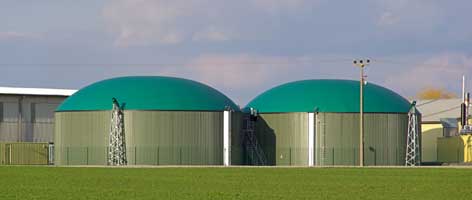Mainly for farmers and landowners AD is a versatile use of biomass crops or waste to produce biogas, which in turn can be used to generate heat and/or electricity or fed back into the natural gas grid

Anaerobic digestion (AD) is a way of producing biogas from various biomass sources, such as energy crops, farmyard residues or food waste. In addition to producing biogas, the process also leaves a solid residue, which is a form of bio-fertiliser.
It can also be used for combined heat and power or even be fed into the natural gas grid as biomethane.
How it works
Anaerobic digestion (AD) is a natural biological process carried out by bacteria in the absence of air, by which organic material is broken down into stable fertiliser and useful biogas. These anaerobic bacteria are an integral component of nature’s waste management and are commonly found in soils and deep waters, as well as in landfill sites.
The resulting biogas can then be burned to generate electricity or heat in the normal way.
Where they work best
This technology is particularly suitable for users with access to a suitable biomass resource, such as farms and the food-processing or retail industries.
The UK currently generates millions of tonnes of organic waste each year that poses a potential threat to the environment, human and animal health. We are being driven to find alternative solutions for the treatment and disposal of organic wastes and to conserve our resources. There is now greater emphasis to reduce the organic waste stream going to landfill and AD can do this while generating renewable energy and producing a usable fertiliser for the soil.
Tariff Levels
… are shown here.
